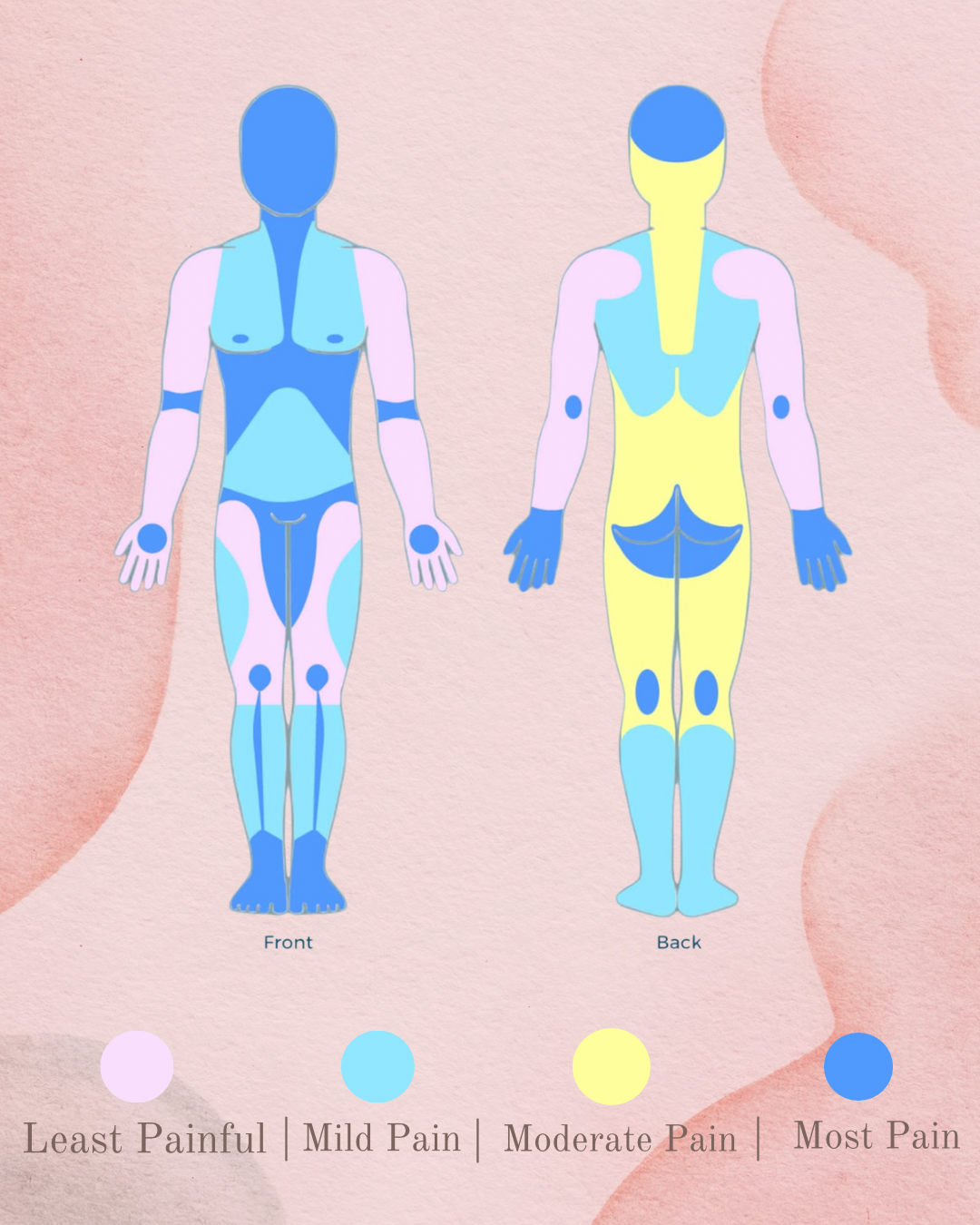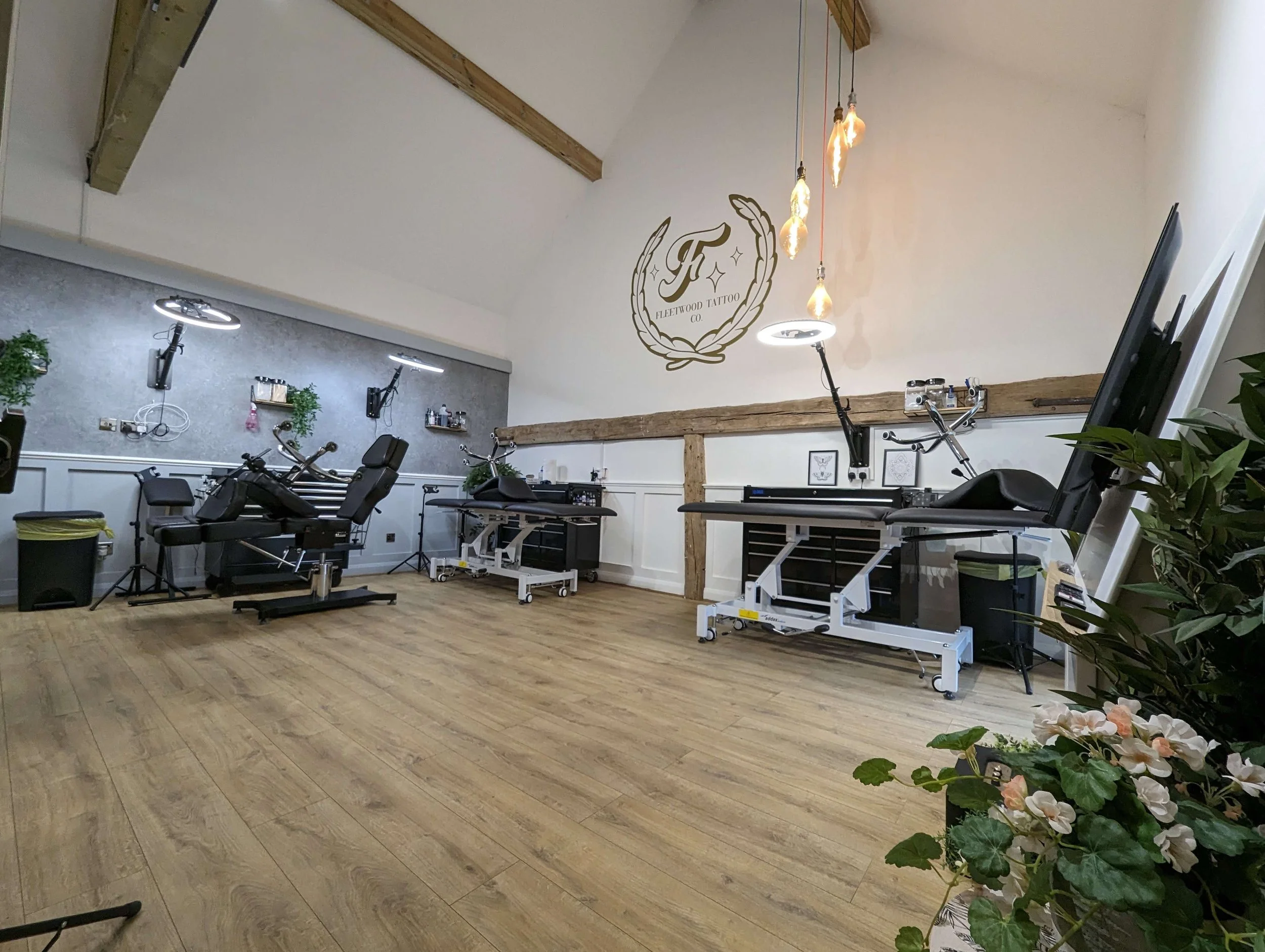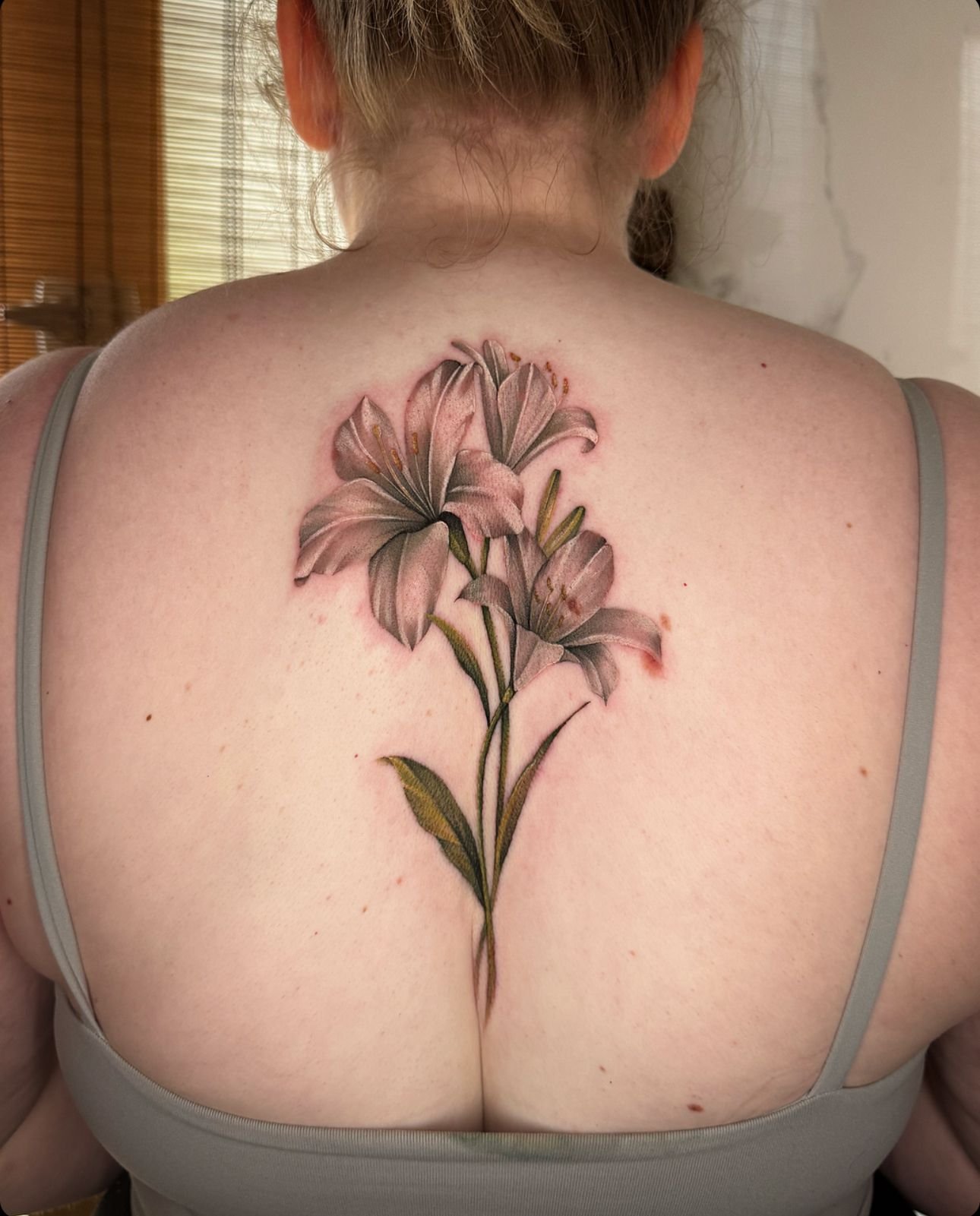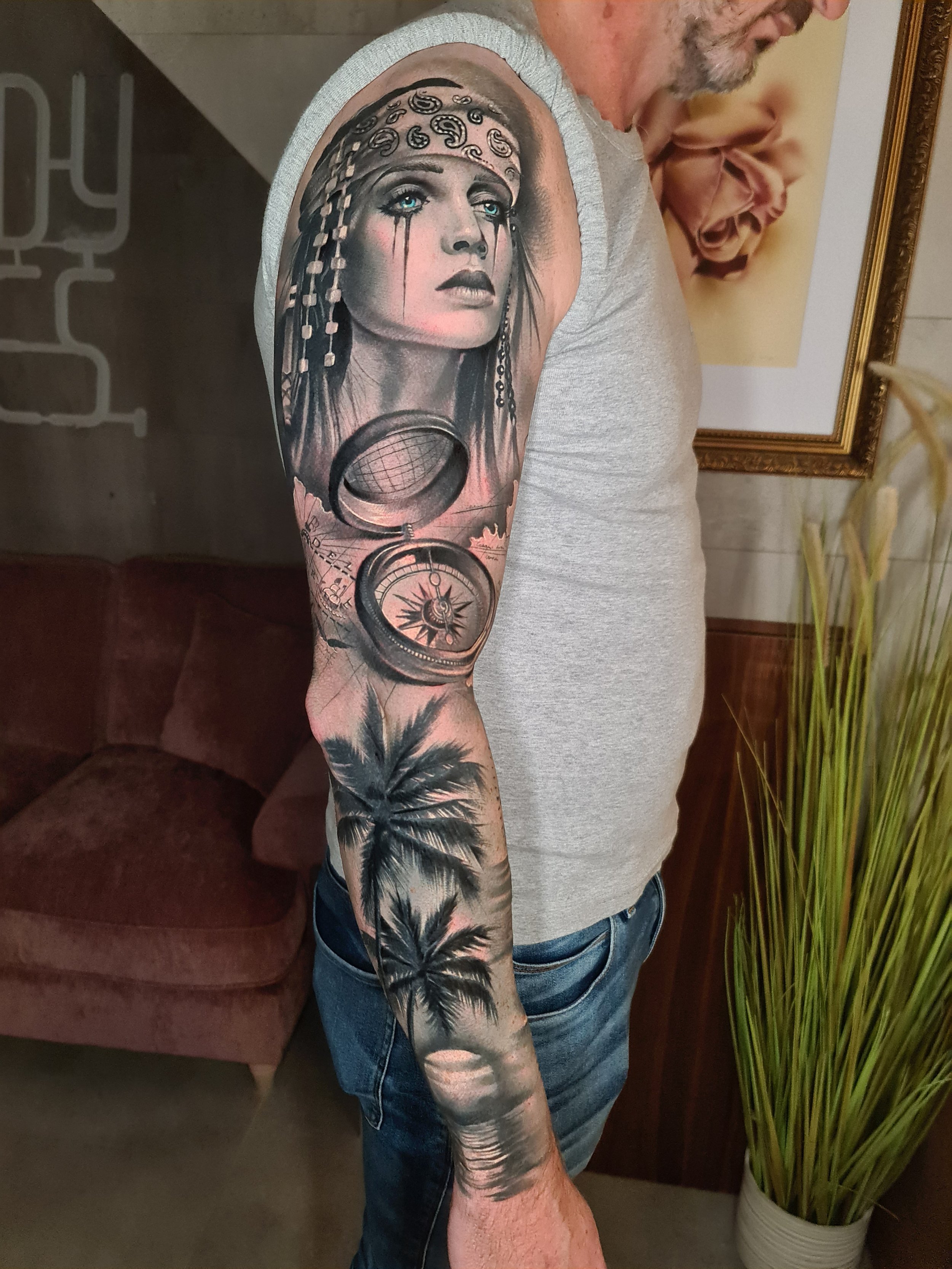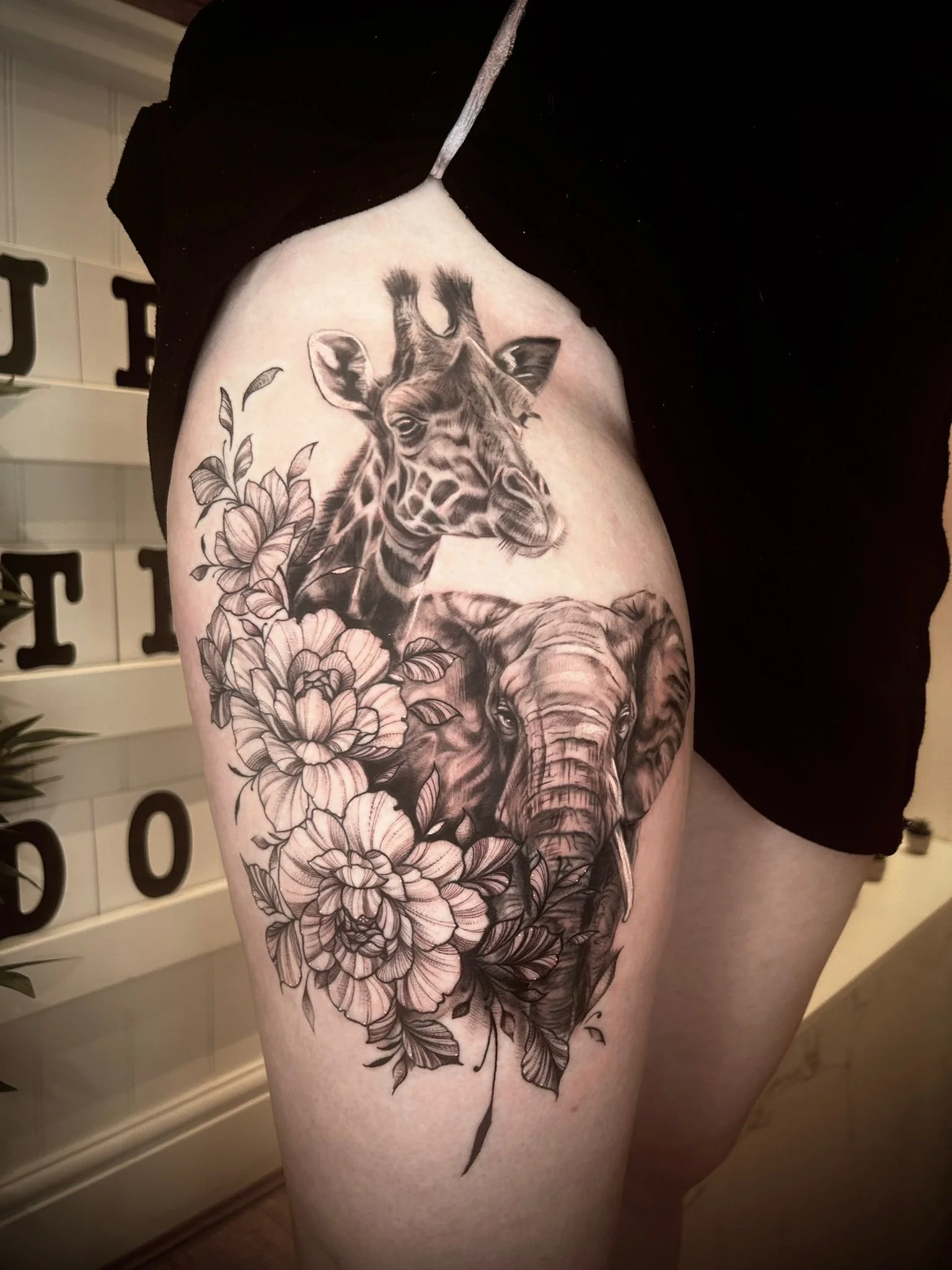tattoo pain scale: what to expect
Ever wondered about the pain scale when getting tattooed? Or maybe you’re planning your first tattoo and want to know which spots are the least painful? Keep reading as we delve into everything you need to know about tattoo pain and how to manage it.
It’s important to remember that everyone’s pain tolerance is different. Several factors can influence how much pain you experience, including:
Body Part/ Placement of Tattoo
Pain Tolerance
Tattoo Size and Complexity
Artist Technique
Hydration and Nutrition
Style of Tattoo
This chart shows the pain scale of body parts when getting tattooed, this gives you a rough idea of what to expect depending on where you will be getting your tattoo.
where is the least painful place to get a tattoo?
Starting out with the least painful places to get a tattoo- going back to our diagram we see that the least painful places generally tend to have more muscle, fat, or fewer nerve endings- which makes them the most tolerable spots for a tattoo!
These are generally the least painful places to get tattooed:
Shoulder area
Upper Arms
Upper Thigh
Forearms
Outer Bicep
Back of the ear
MODERATELY painful tattoo places:
Chest
Stomach
Lower Back
Calves
MOST PAINFUL TATTOOS:
Ribcage
Feet and Ankles
Hands and Fingers
Spine
Buttocks
Knees and Elbows
Armpits and Groin
Neck and Throat
how can i reduce the pain when getting a tattoo?
If you’d like to alleviate the pain when getting a tattoo, there are definitely some strategies you can use to prevent it hurting as much as it would.
Get Plenty of Rest Before Your Appointment
Being well-rested helps your body handle the stress of the tattoo session better. Lack of sleep can make you more sensitive to pain.
Stay Hydrated
Drink lots of water before and during your tattoo appointment. Hydrated skin is more supple and less likely to get irritated, which can reduce the intensity of the pain.
Eat a Healthy Meal
Make sure you have a good meal before your appointment to keep your blood sugar stable. Low blood sugar can make you feel faint or more sensitive to pain.Avoid Alcohol and Caffeine
These substances can make your skin more sensitive and lead to more bleeding during the tattoo process, which can increase discomfort.
Apply Numbing Cream
Some people use over-the-counter numbing creams or gels to reduce pain. Always check with your artist before applying anything to your skin.Take Deep Breaths and Relax
Staying calm and breathing deeply helps your body cope with the pain. Tension can make the pain worse, so try to stay as relaxed as possible.Wear Comfortable Clothing
Wearing loose clothing that doesn’t press against the tattooed area can prevent additional discomfort while you're getting your ink.
If you’ve read all of this and would still like to get a tattoo whether it’s painful or not- don’t hesitate to get in touch with us to get your new ink done!
We’re based in Essex in the United Kingdom and would be delighted to welcome you here!
Our studio located in the beautiful Essex countryside.
Here is some of our work:
